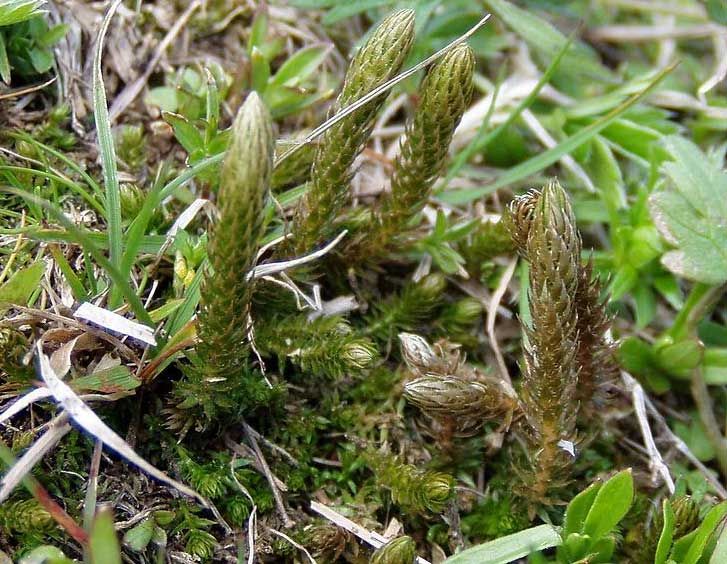Selaginella selaginoides (*) Cladus: Eukaryota Name Selaginella selaginoides, (L.) Beauv. Mart. & Schrank Vernacular names References USDA, NRCS. 2006. The PLANTS Database, 6 March 2006 (http://plants.usda.gov). Data compiled from various sources by Mark W. Skinner. National Plant Data Center, Baton Rouge, LA 70874-4490 USA. Selaginella selaginoides is a non-flowering plant of the spikemoss genus Selaginella with a wide distribution around the Northern Hemisphere. It resembles a moss in appearance but is a vascular plant belonging to the division Lycopodiophyta. It has a number of common names including lesser clubmoss, northern spikemoss, club spikemoss, low spikemoss and prickly mountain-moss. This plant has one close relative, Selaginella deflexa, native to Hawai'i. These two plants form a small clade that is sister to all other Selaginella species. Description It is a small, delicate, low-growing plant. Its perennial sterile stems are short, slender and irregularly branched reaching up to 15 cm in length. They creep along the ground but usually turn upwards near the tip. They have small, pointed, triangular leaves about 1-2 mm long. The plant also produces annual fertile shoots. They are more robust than the sterile stems and stand erect. They are usually 3-6 cm tall and 4-6 mm across but can grow to 10cm when conditions are favourable. Their leaves are slightly longer than those of the sterile stems and are spirally arranged around the stem, pointing upwards. The fertile shoots bear stout, yellowish cones which are only slightly differentiated from the branch. The cones usually bear two kinds of sporangia: lobed megasporangia in the lower part of the cone which produce megaspores and simple microsporangia in the upper part which produce many tiny microspores. Distribution and habitat Its range covers northern parts of Europe, Asia and North America including Greenland, Iceland and the Faroe Islands. In Europe it occurs south to the Pyrenees, Apennines and Caucasus. In Asia it reaches Japan while in North America it occurs south as far as Nevada, Wisconsin, Michigan and Maine. It is found in damp places with neutral to alkaline soils, most often in mountainous areas. It inhabits bogs, the shores of streams and lakes, wet cliffs and ledges, grassland and dune slacks. It is a poor competitor which does not grow in areas with tall, dense vegetation. In North America it mainly grows from 600 to 2900 m above sea-level, occasionally reaching 3800 m. It Britain it has been recorded from sea-level to 1065 m. The species is not considered to be globally threatened but has declined in some areas due to drainage and habitat destruction. In Britain and Ireland it had mostly disappeared from lowland areas by 1930. References
Source: Wikipedia, Wikispecies: All text is available under the terms of the GNU Free Documentation License |
|

